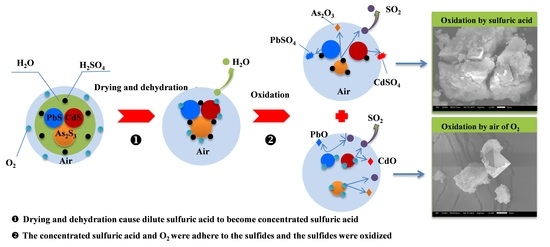Release Behaviors of Arsenic and Heavy Metals from Arsenic Sulfide Sludge during Simulated Storage
Abstract
Share and Cite
Yao, L.; Min, X.; Ke, Y.; Wang, Y.; Liang, Y.; Yan, X.; Xu, H.; Fei, J.; Li, Y.; Liu, D.; et al. Release Behaviors of Arsenic and Heavy Metals from Arsenic Sulfide Sludge during Simulated Storage. Minerals 2019, 9, 130. https://doi.org/10.3390/min9020130
Yao L, Min X, Ke Y, Wang Y, Liang Y, Yan X, Xu H, Fei J, Li Y, Liu D, et al. Release Behaviors of Arsenic and Heavy Metals from Arsenic Sulfide Sludge during Simulated Storage. Minerals. 2019; 9(2):130. https://doi.org/10.3390/min9020130
Chicago/Turabian StyleYao, Liwei, Xiaobo Min, Yong Ke, Yunyan Wang, Yanjie Liang, Xu Yan, Hui Xu, Jiangchi Fei, Yuancheng Li, Degang Liu, and et al. 2019. "Release Behaviors of Arsenic and Heavy Metals from Arsenic Sulfide Sludge during Simulated Storage" Minerals 9, no. 2: 130. https://doi.org/10.3390/min9020130
APA StyleYao, L., Min, X., Ke, Y., Wang, Y., Liang, Y., Yan, X., Xu, H., Fei, J., Li, Y., Liu, D., & Yang, K. (2019). Release Behaviors of Arsenic and Heavy Metals from Arsenic Sulfide Sludge during Simulated Storage. Minerals, 9(2), 130. https://doi.org/10.3390/min9020130





